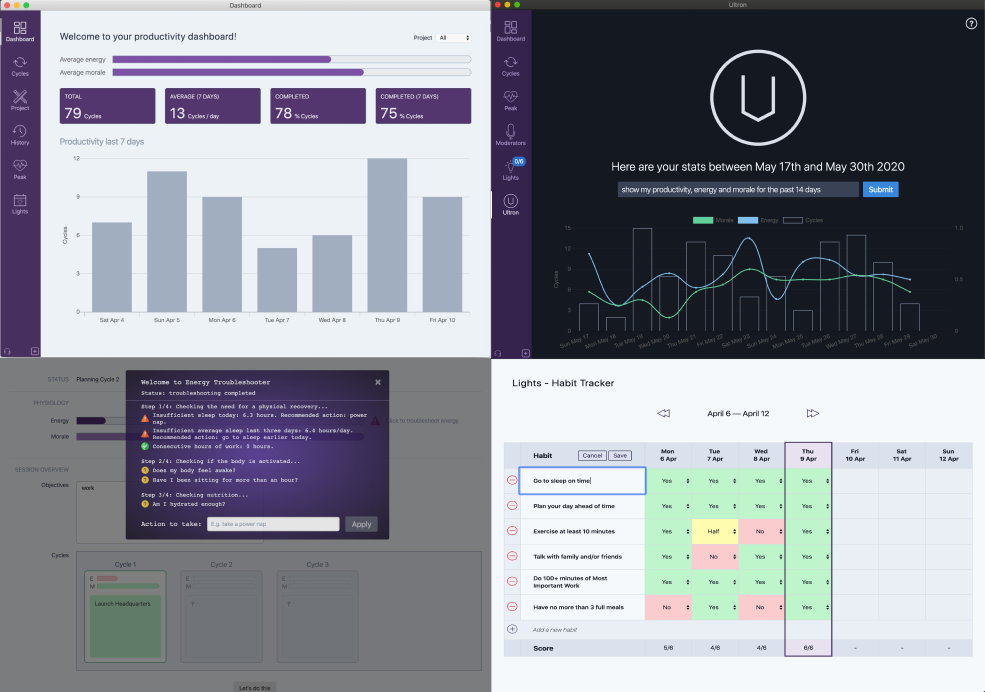
Ultraworking Headquarters was created to give ambitious, analytical, and pro-social people access to high performance states on demand so that they could do great work.
As the then-interim CTO of Ultraworking, this was my inaugural project.
While our dream of “full-stack peak performance” was never fully realized, what we achieved was often groundbreaking and ahead of its time.
Note: These are just a few highlights from our journey with Headquarters.
The Team Behind Headquarters
Luka Dover, Saad Zafar, and I drove the project with Sebastian Marshall’s guidance. While all of us wore many hats, I leaned into leadership. Luka masterfully combined ML/AI expertise with design and front-end, and Saad dug deep into the backend.
The true stars of Headquarters were Luka and Saad; the credit is wholly theirs.
HQ’s Initial Launch
With a tech spine of Electron, Svelte, and Firestore, and invaluable assistance from Kai Zau and Stepan Parunashvili, we released Headquarters on February 1, 2020.
Our respective “hello world” was a functional desktop version of Work Cycles.
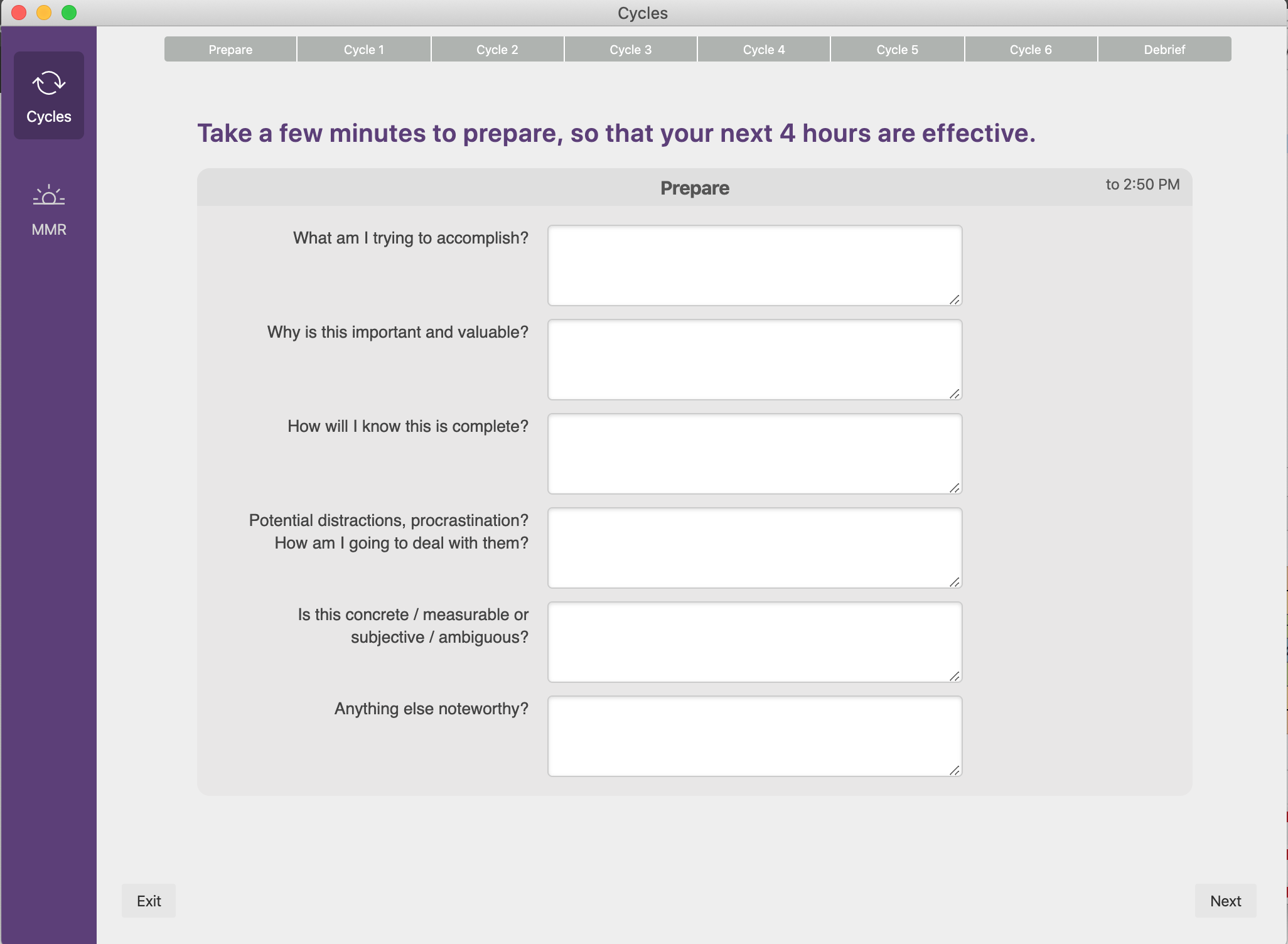
The First Major Update: Expanding Work Cycles
Our first update — Work Cycles History — came a few days after launch.
While Work Cycles had previously only been available on Google Sheets, Headquarters made it possible to view previous sessions and mine them for productivity and performance insights.

The Work Troubleshooter: A Performance Guide
After launch, we released weekly updates with new modules like habit tracking and monthly planning (alongside bug fixes and optimizations).
One of my favorite features was the work troubleshooter, which would interface with your work, sleep, and activity data (all captured in the app via various API syncs) to help you determine what might be going wrong during a particular work session.
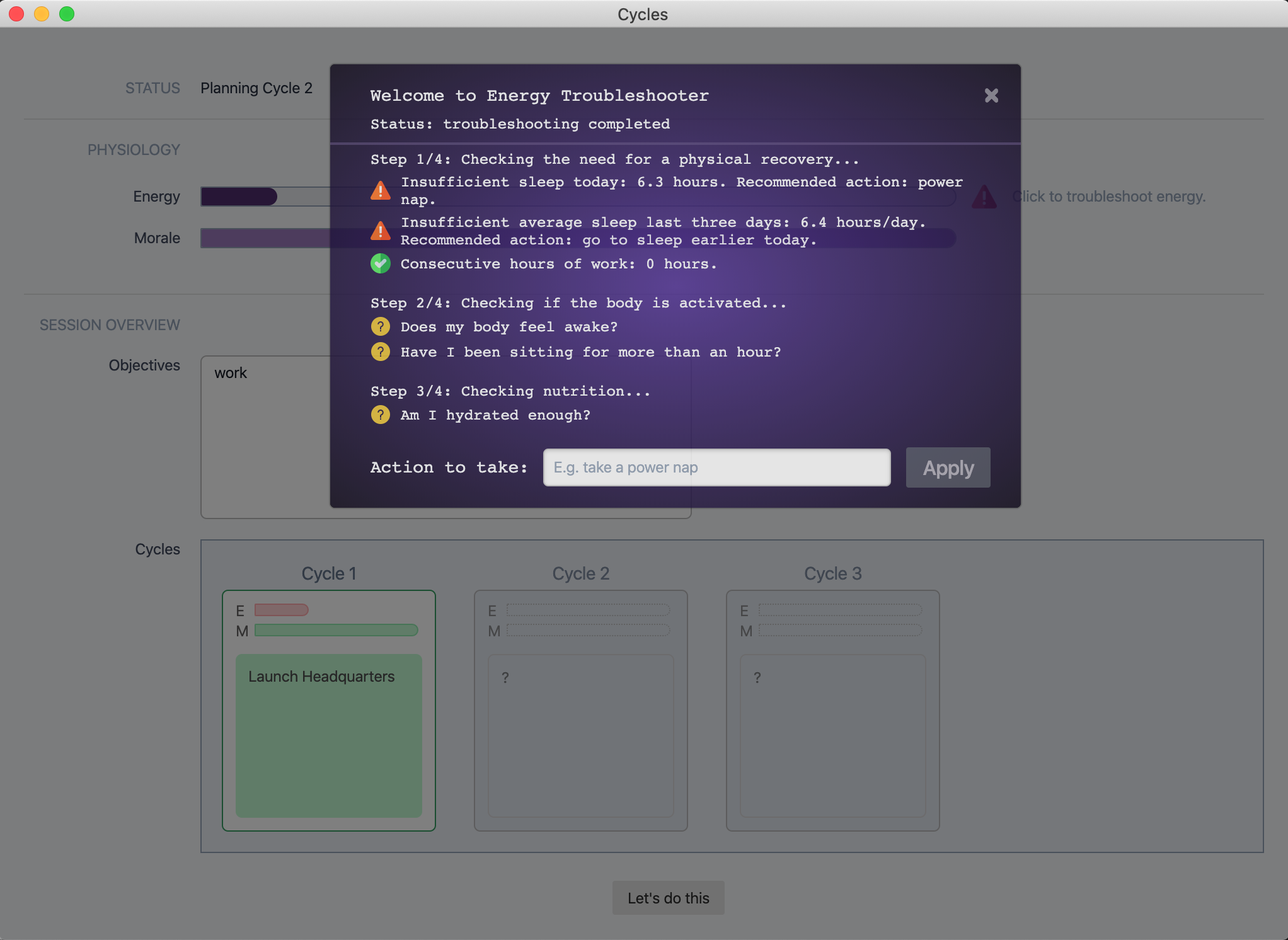
The Work Dashboard
Rather than keeping Work Cycles as the first screen that people saw, we wanted to add something that would give a sense of momentum, so we developed this dashboard that users would see when they first started Headquarters.

Enter Ultron: AI Productivity Analyst
Another groundbreaking feature was Ultron, an AI Assistant geared to help you calculate your productivity statistics (which reminds me of a very early ChatGPT Code Interpreter).
My favorite use in helping me identify the times of day I was most productive for a particular kind of work.
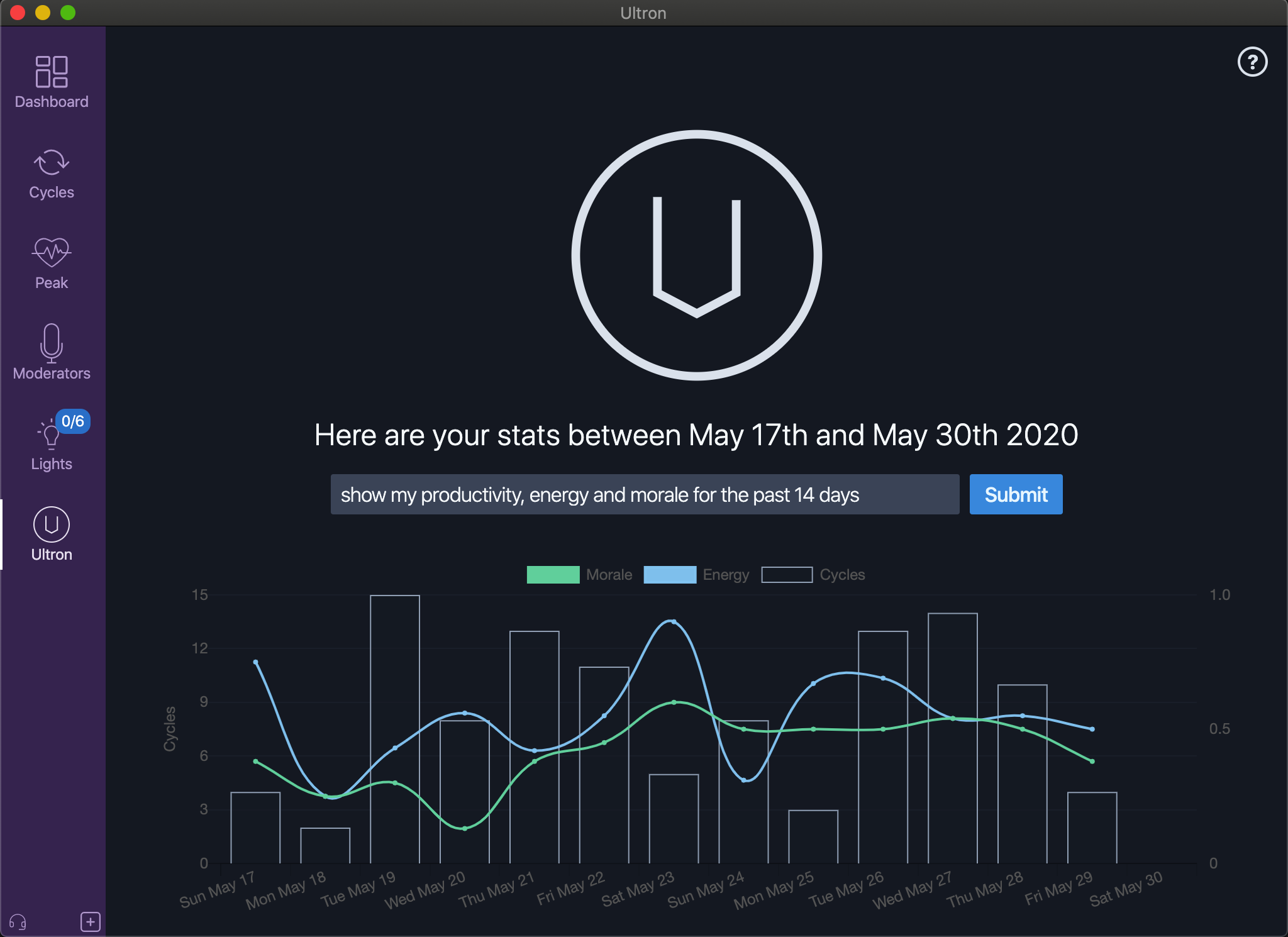
Clockwork Nutrition
Clockwork Nutriton was a way to completely delegate away your nutrition.
We’d arrange meals to be delivered every day, freshly cooked and ready to eat. The meals would meet your macronutrient and caloric targets.
Inside Headquarters, a Clockwork module complemented the service with mental and physical response tracking and an interface to Geoshift meals or sync Garmin/Fitbit accounts.
You can see a deeper dive into Clockwork Nutrition here.
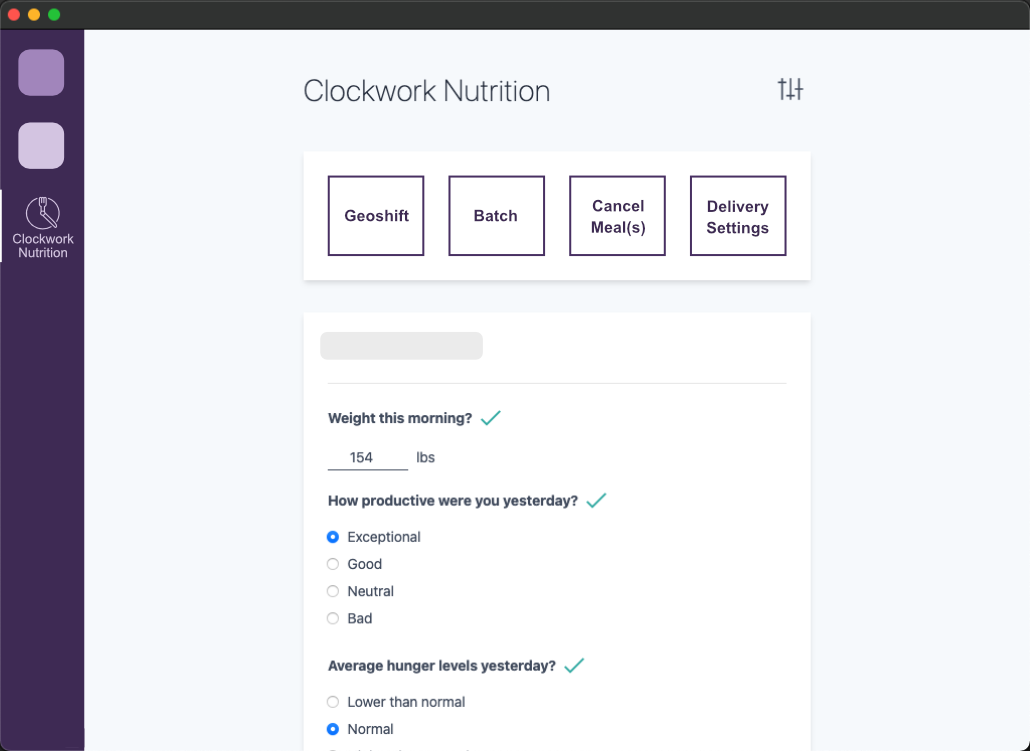
What else could Headquarters do?
Just off the top of my head,
- Trigger Music: Used the Spotify API to help users start their Work Cyckes session with a pre-selected song to get them into the right mental state. After the song finished, they could optionally record whether it was effective.
- Monthly Planning: Reflect on each day of the previous month and do targeted planning for the upcoming one. Notice where you might be setting yourself up for failure by trying to fit too much in and adjust accordingly.
- Habit Tracking: Get a visual representation of your habits as you do them throughout the week. Add your friends to do it together.
- The Pentathlon: “16 days of peak performance styled as a team competition”. You might as well check out the landing page here if you’re intrigued.
- And much more.